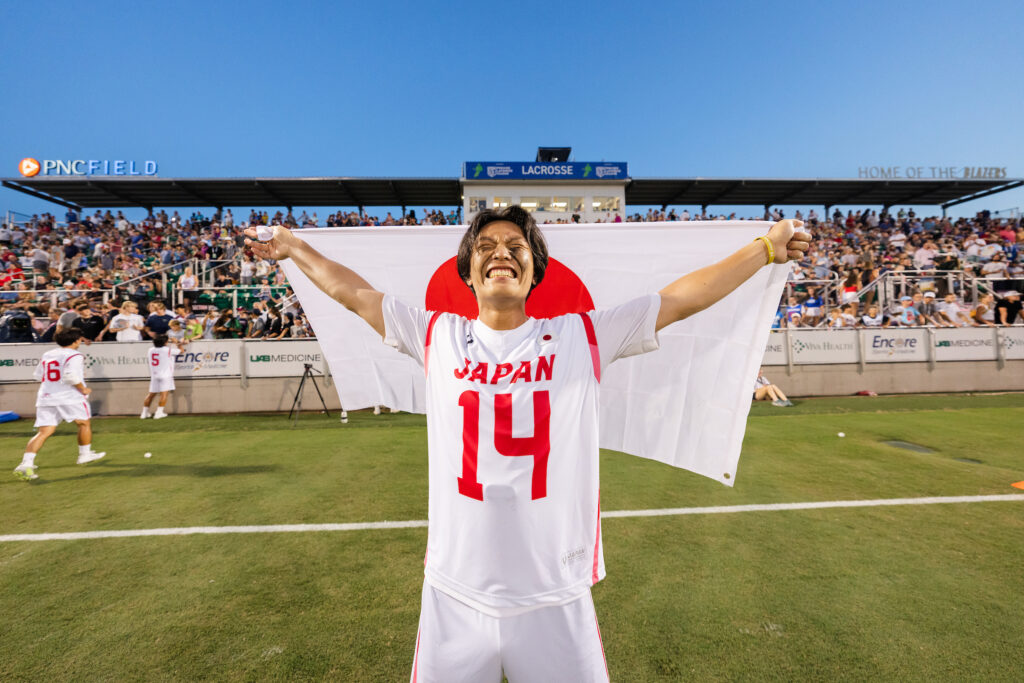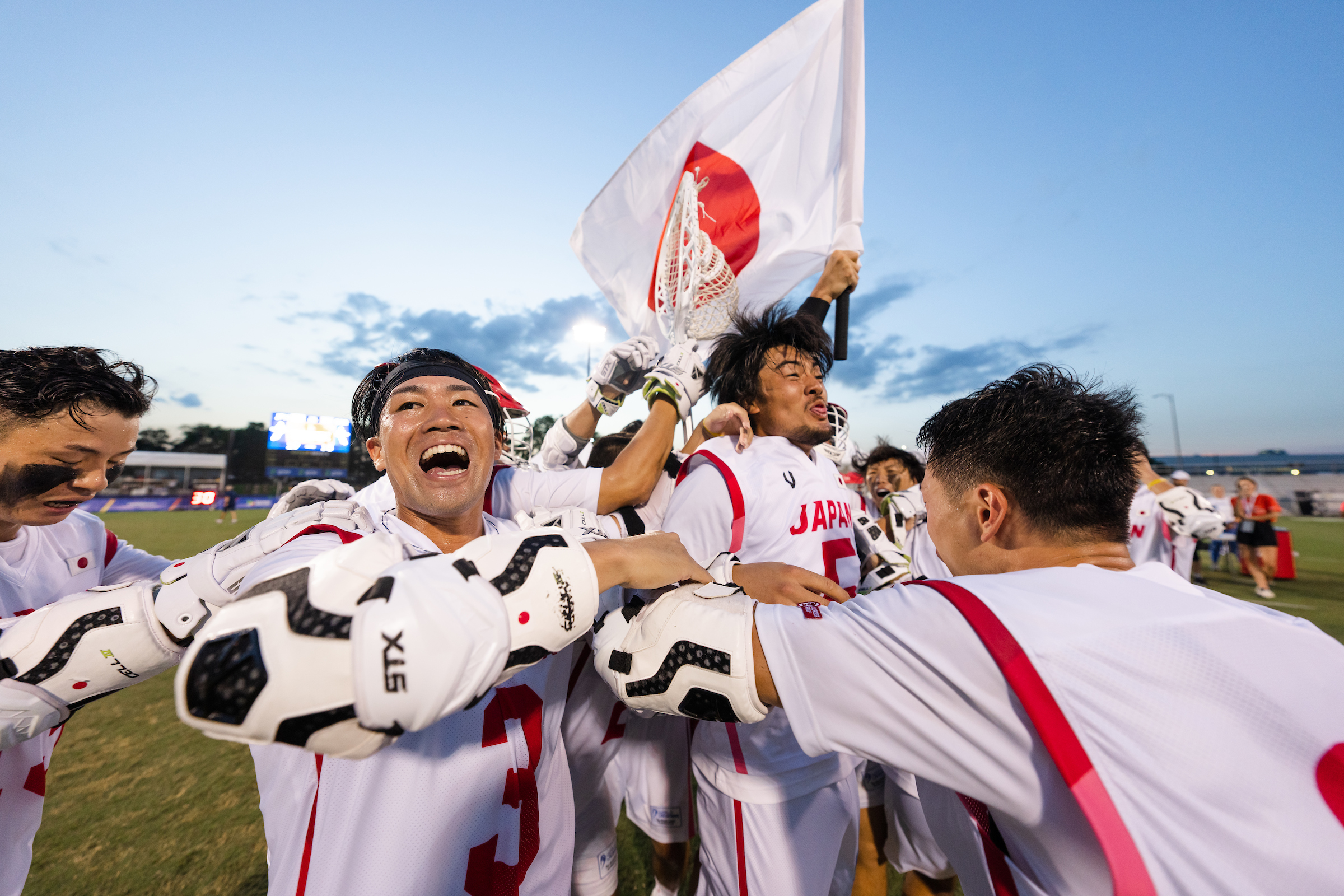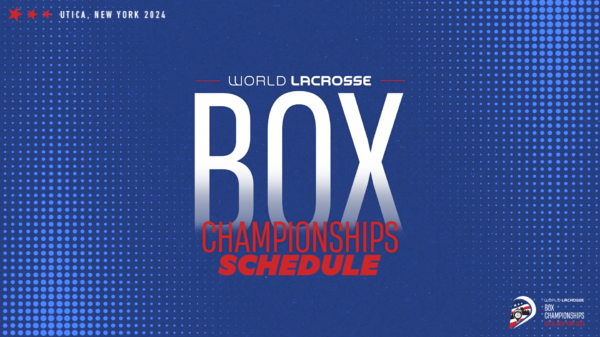Japan Lacrosse started in the 1986 by a group of college students who built an organization on the principles of enrichment of life through sport as well as international friendship through competition.
Now, in 2023, more than 35 years later, the organization that brought lacrosse to its island nation has blossomed into one of the model organizations in the sport, putting out national teams that are competing with established powers that have played more than three times as long.
Most recently at the 2023 World Lacrosse Men’s Championship in San Diego, Japan finished fifth, ousting England, a perennial top-five team, in placement play. The finish continued the strong trend from 2022, when Japan finished in fifth at both the women’s and U21 men’s championships.
The highlight of the year came at The World Games 2022, when Japan took home its first medal at a world-level event with a third-place finish, sealed with a dramatic overtime win against England.
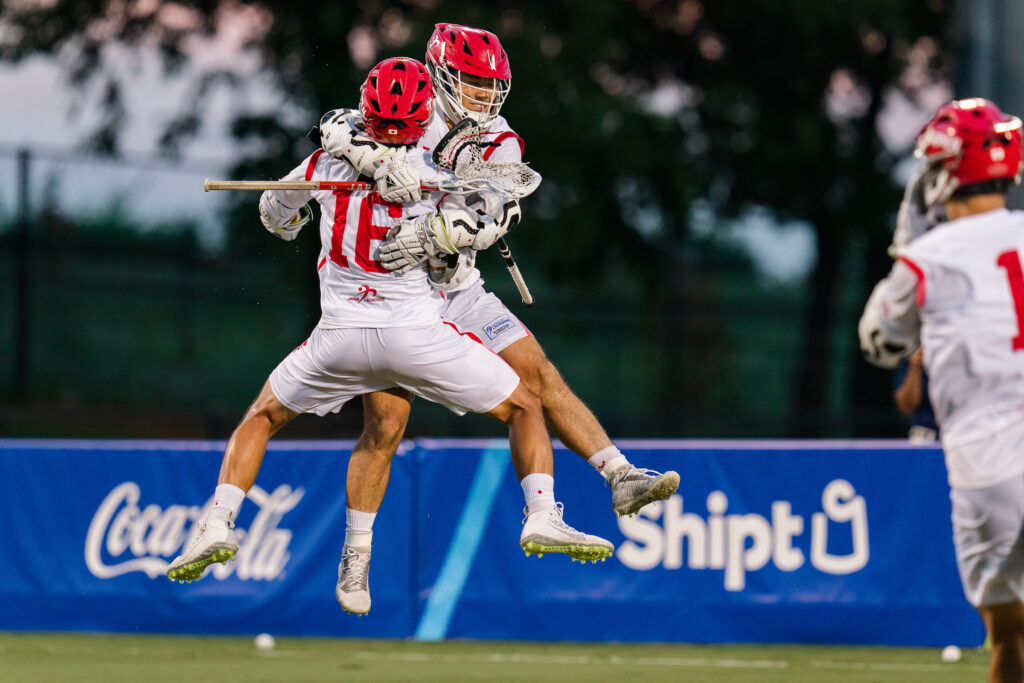
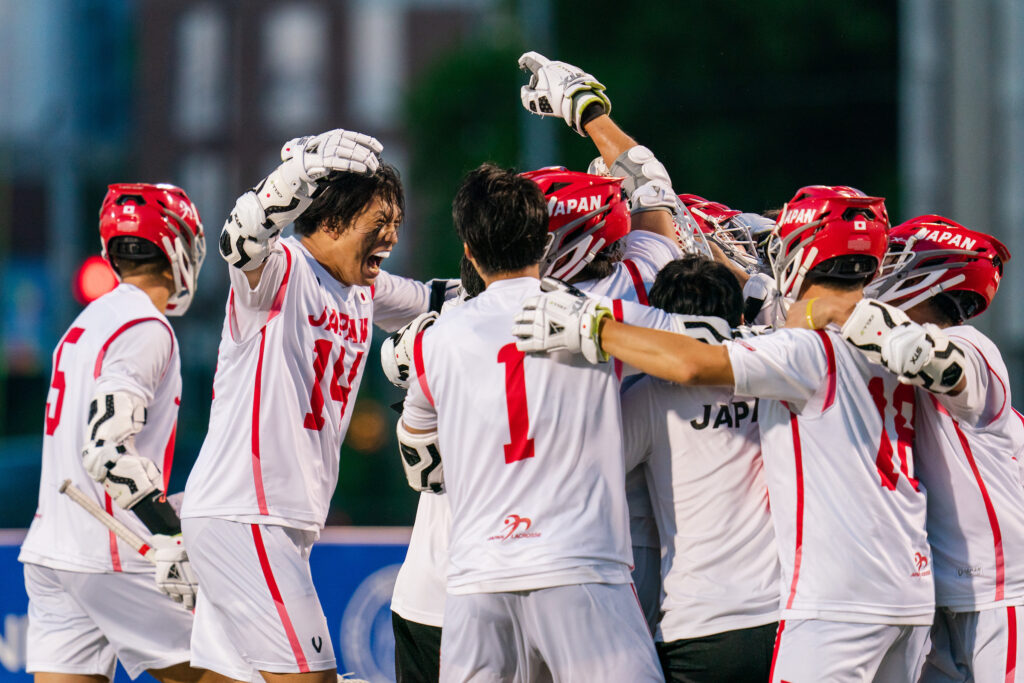
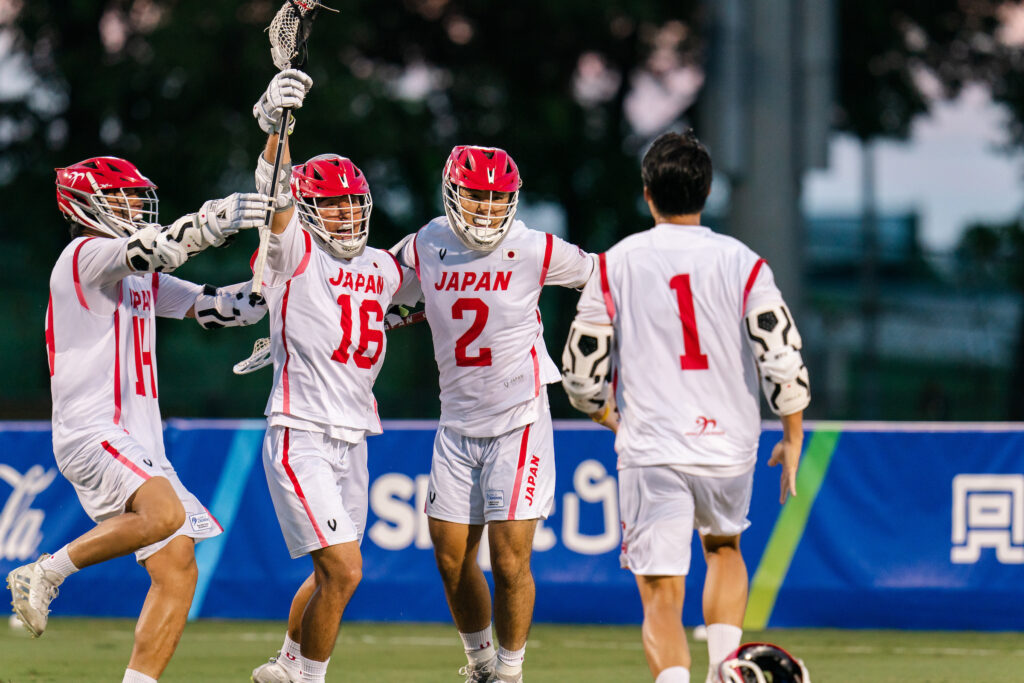
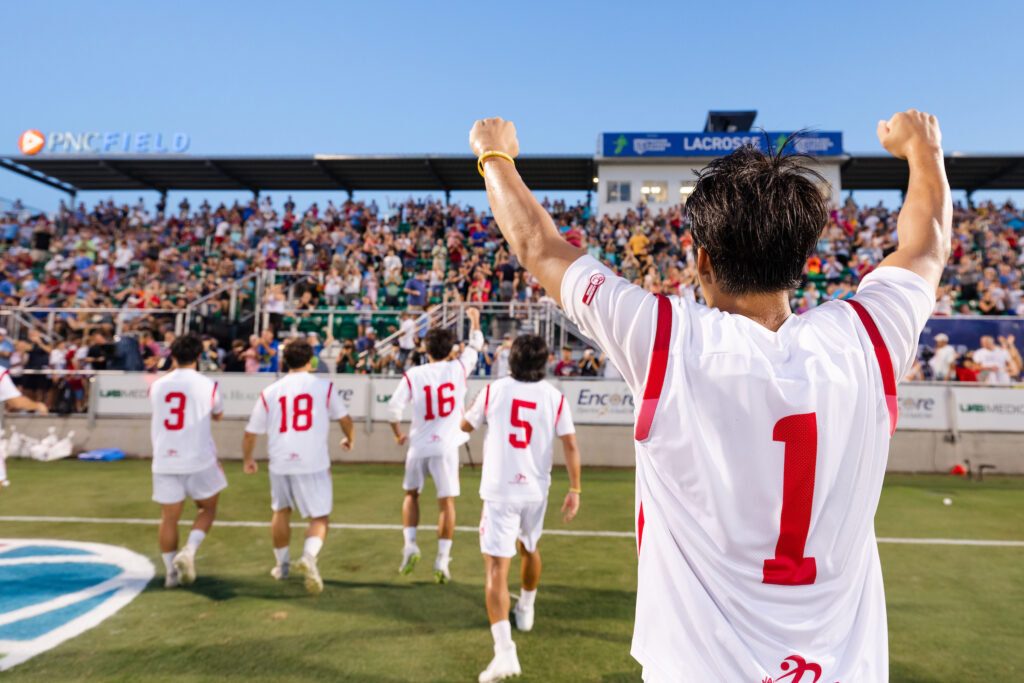
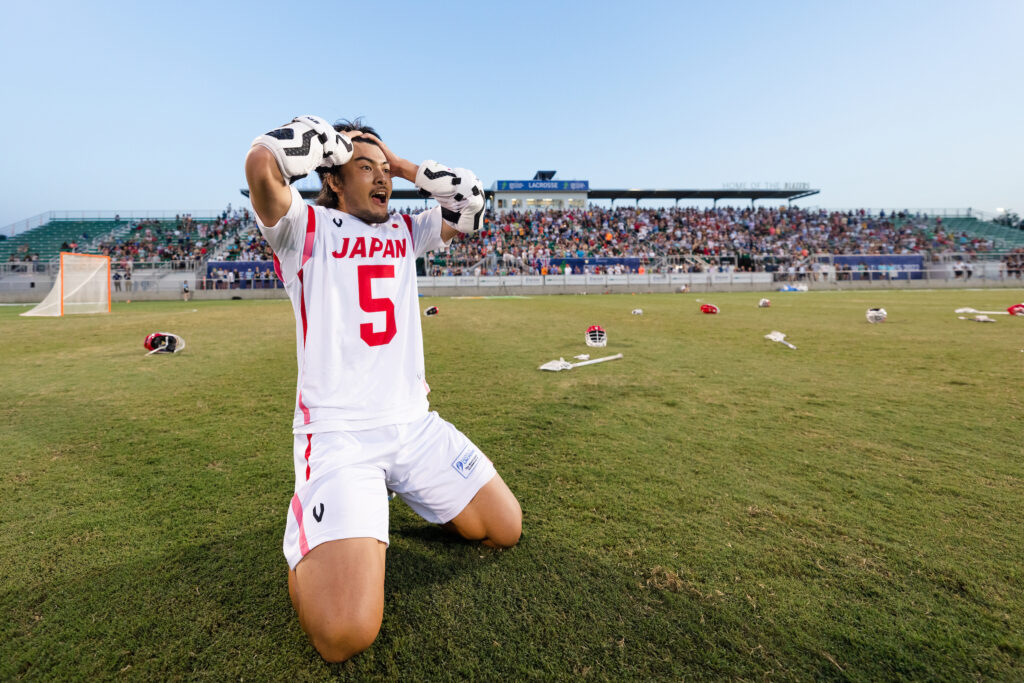
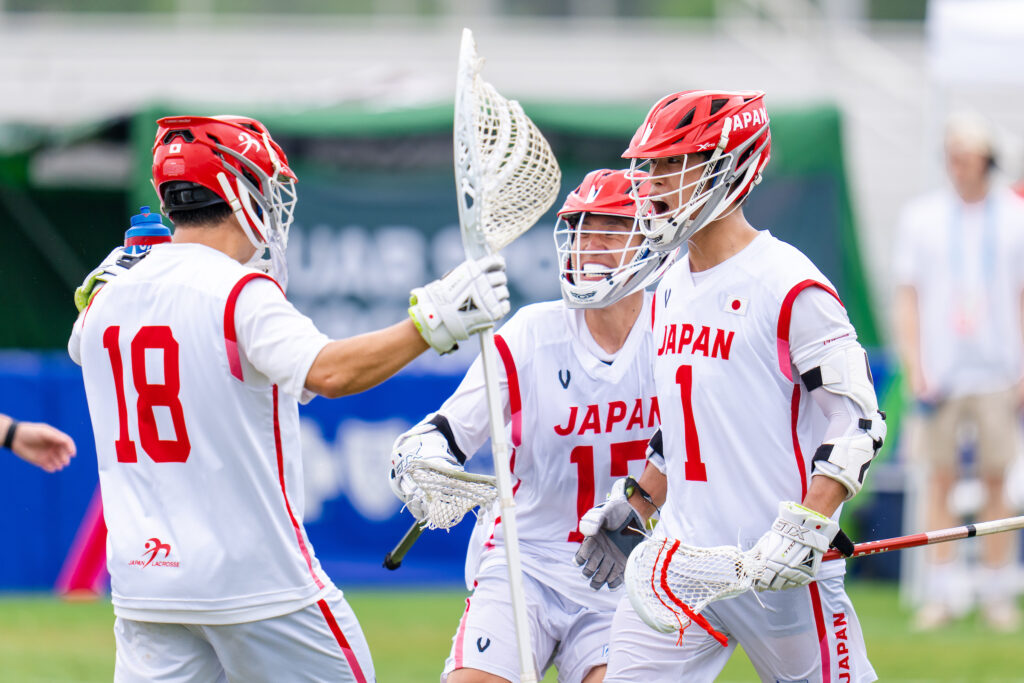
Japan has been competitive at world championships before, but to unseat the elite powers of the game across four different events in two years – a new era of Japan Lacrosse has taken the sport by storm.
The founding principles are still driving Japan’s growth, but the organization has had to be agile and adapt. By forging its own path, the results of the past two years are not a high-water mark, but the baseline for future success, signifying a definitive shift in the global axis of the game.
***
In Japan, most players begin playing lacrosse in university once they are 18. That makes development hard compared to countries where lacrosse is taught at an early age.
But the collegiate infrastructure has its own benefits, and Japan was able to quickly compete with some of the top international programs, finishing in the top 10 in both the men’s and women’s championships by the end of the 2010s, when both events had expanded past double-digit entrants.
At first, Japan relied on a North American influence to teach the game, but quickly began to develop its own Japanese style.
“One of the basic spirits of Japan Lacrosse is to let our players and coaches think for themselves and have a proactive attitude,” said Yon Okubo, one of the founding members of Japan Lacrosse who coached both the men’s and women’s teams in the 2000s.
“The culture of sports in Japan has very deep roots as an educational and ‘forced’ activity,” said Okubo. “Lacrosse had a ‘newness’ to it that was particularly important, and a key point in our development was embracing the enjoyment of sport. For us, local development was about instilling this culture in our coaches and then letting players think for themselves.”
“As a country, we are good at making our own things, which I’ll call ‘Japanification,’ and we did the same for lacrosse,” said Takeshi Sato, the director of the high performance training department of the JLA.
As a non-English speaking country, the sport of lacrosse was a challenge to develop because so much of the coaching from the leading countries was done in English. The leaders in Japan mostly spoke Japanese and had to improvise their own game style.
That style was based on quick pace, lots of ball movement, and passing and transition offense. It worked, as Japan finished ninth in the women’s championship in 2013 and 2017, and eighth and sixth in the men’s championship in 2014 and 2018.
It took time, but Japanese lacrosse evolved as different coaching pathways appeared.
Yoko Shibata played for the women’s national team in 2009 and after missing out on the 2013 squad, decided to get into coaching. Coaches in Japanese women’s lacrosse were mostly former men’s players, and Shibata was part of a wave of the women’s athletes joining the ranks.
Coaching in Japan is on a volunteer basis, which Shibata said coaches take on because they “love the sport and can balance it with jobs and private life.”
Shibata stayed committed because of her own experience playing, and she wanted to push Japan to be even better. This is a common theme among the coaches who dedicate their time to the national program.
By the time the association asked Shibata to coach at the 2022 Women’s Championship, she already had nearly eight years of experience with junior and senior teams, a rarity at her age.
The enabling and supportive mindset that Shibata grew up in translated to the players, who are the motivated to push themselves toward a medal.
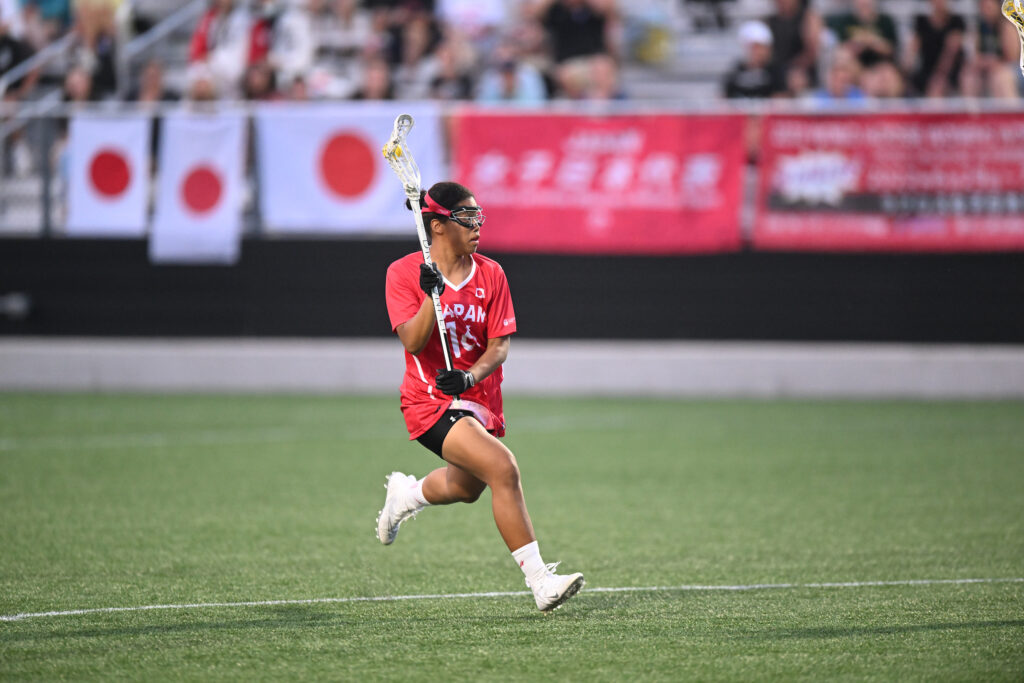
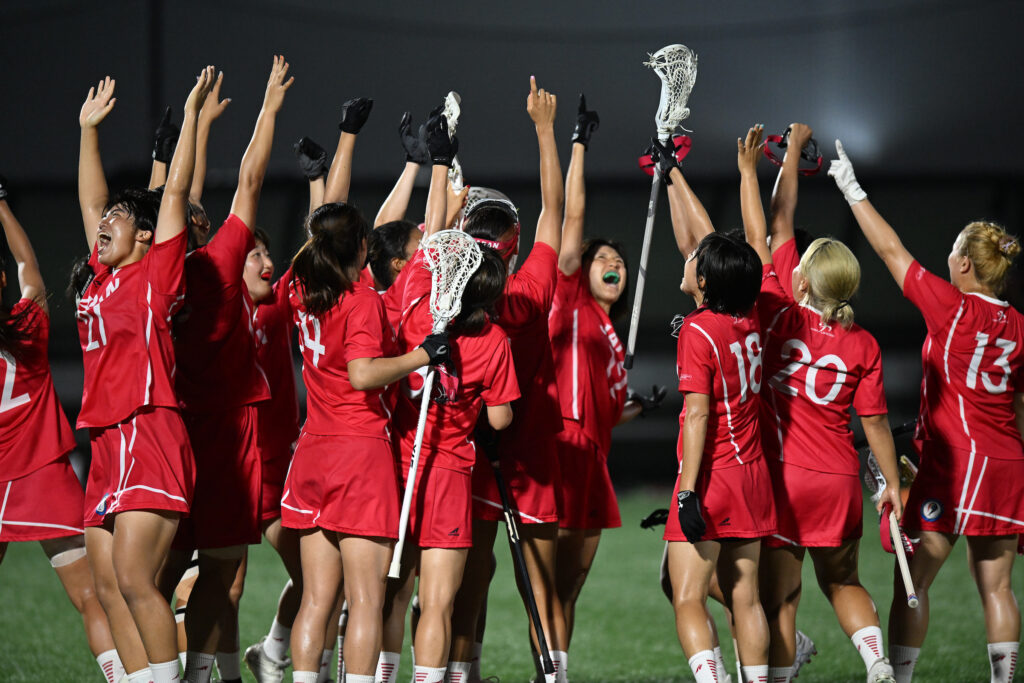
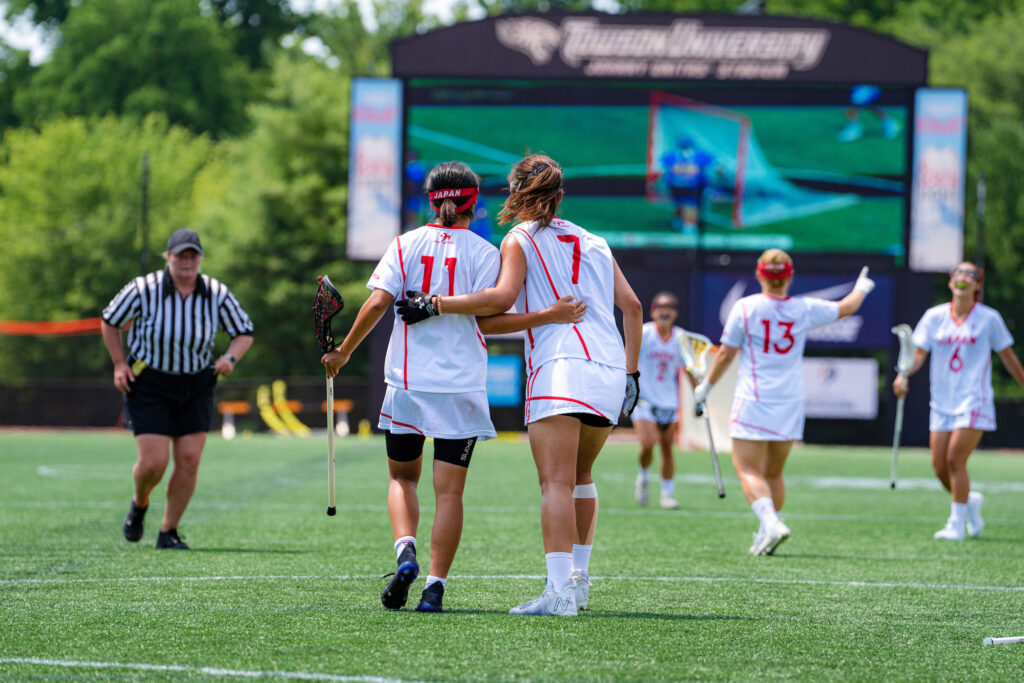
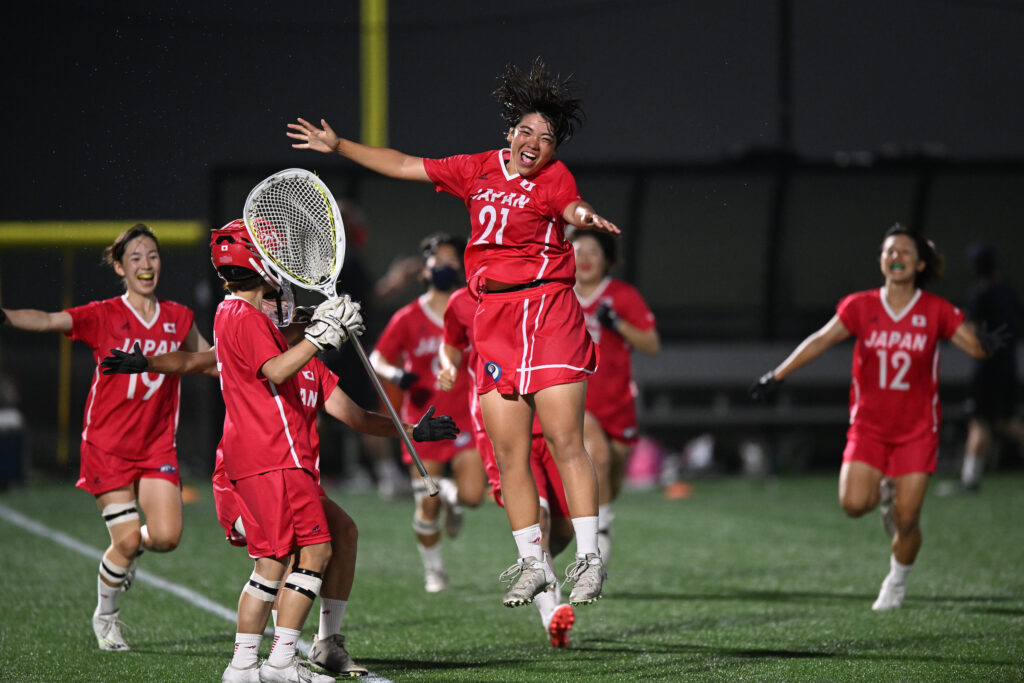
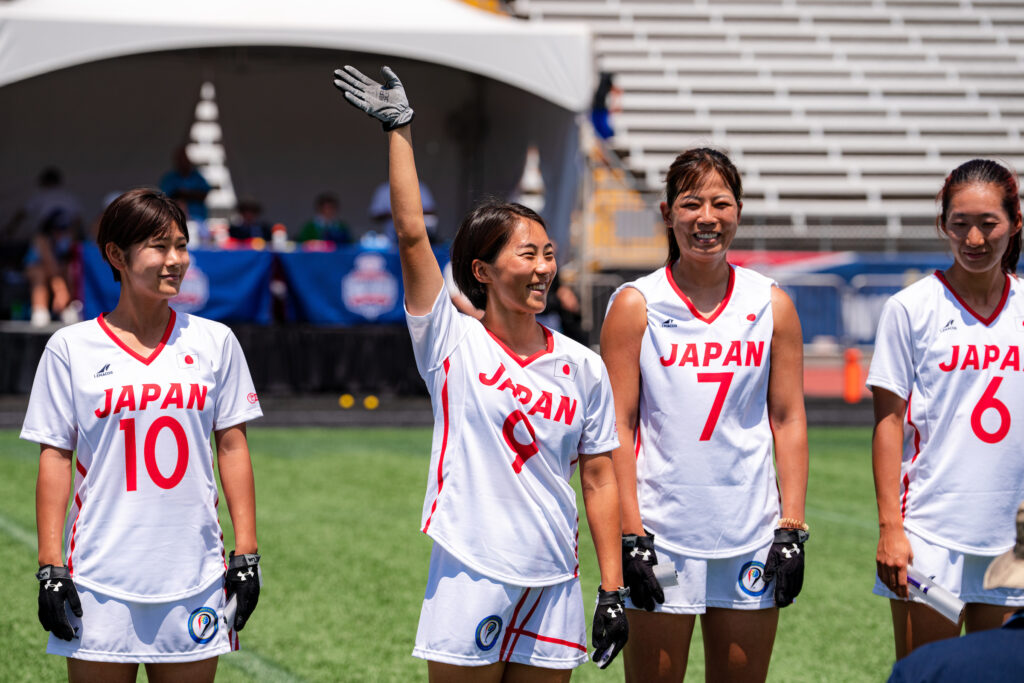
The team led by Shibata in 2022 finished fifth, bowing out of the playoffs with a loss to the United States, which inspired the players.
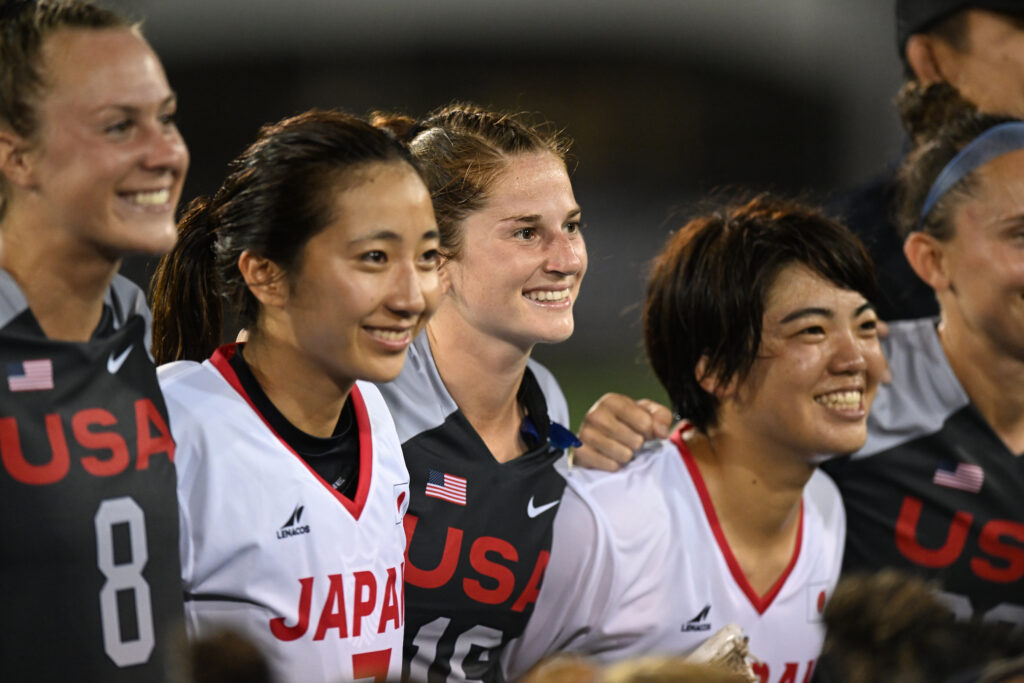
“They want to experience that level more often, and now a few of them are choosing to push themselves outside of Japan,” said Shibata. “We support them to the fullest and let them grow.”
The women’s program has a handful of athletes playing collegiate lacrosse overseas, and this is only possible with increased youth participation starting in high school. Shibata said when she played, 95 percent of athletes began in university, but the number is now closer to 80 percent. The success of the national team on such a big stage inspires even more players to join and develop in the sport, with the dream of representing Japan on an international stage as an attainable goal.
***
The men’s team has followed a similar trajectory, as its head coach at the 2023 Men’s Championship, Naofumi Suzuki, found his role after working in the development academy for five years with a core group of players. He started coaching in 2017 and was the offensive coordinator for the men’s U21 team that competed at the world championship in 2022.
Suzuki, like Shibata, was given a blank canvas to work with, and wanted to modify the Japanese style slightly, which was a challenge given that many other players in the pool started in college and only had two to three years of experience.
“Lacrosse has evolved so rapidly the past few years and got past a level than when I played,” said Suzuki. “I didn’t want our inexperience to be an excuse and tried to develop our players at the standard of the most competitive lacrosse teams on the international stage.”
Suzuki introduced more controlled and deliberate offense with a lot of two-man actions in 2022, and it worked as Japan finished fifth.
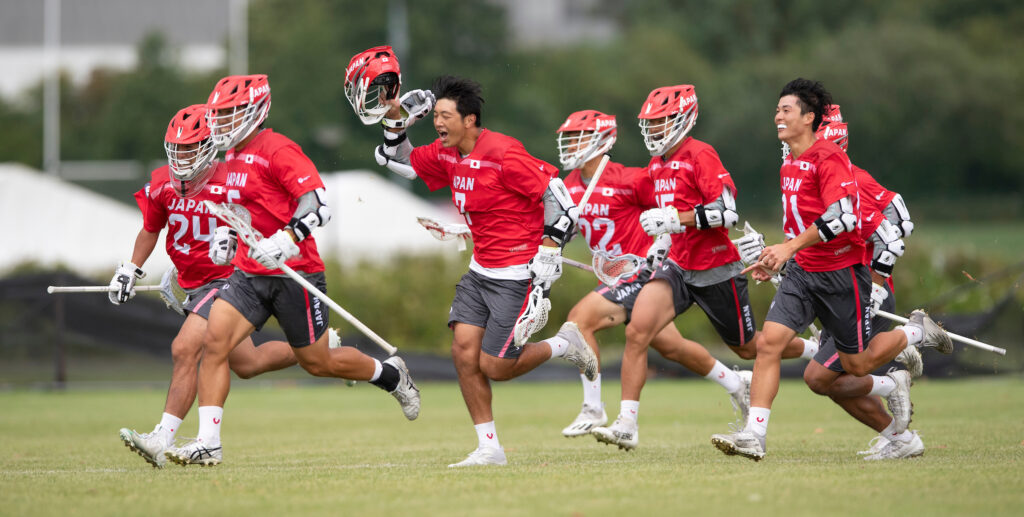
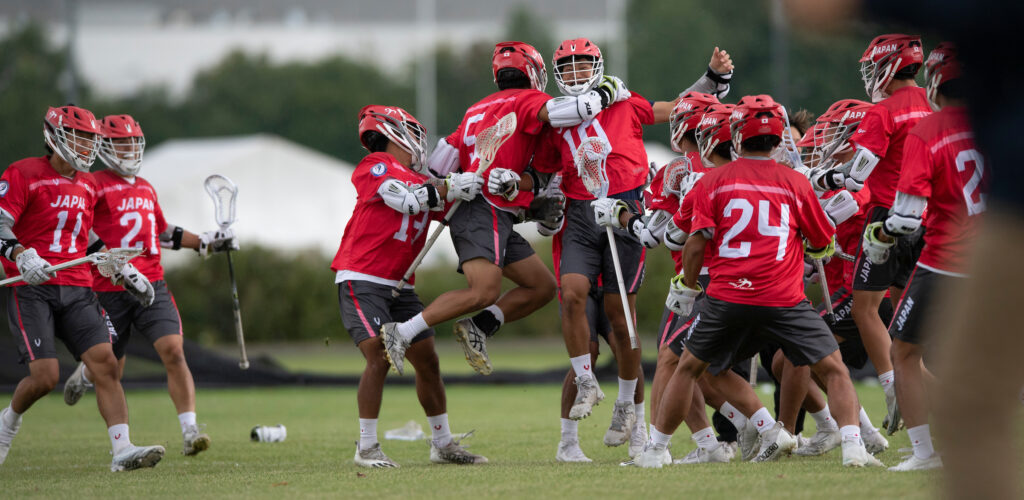
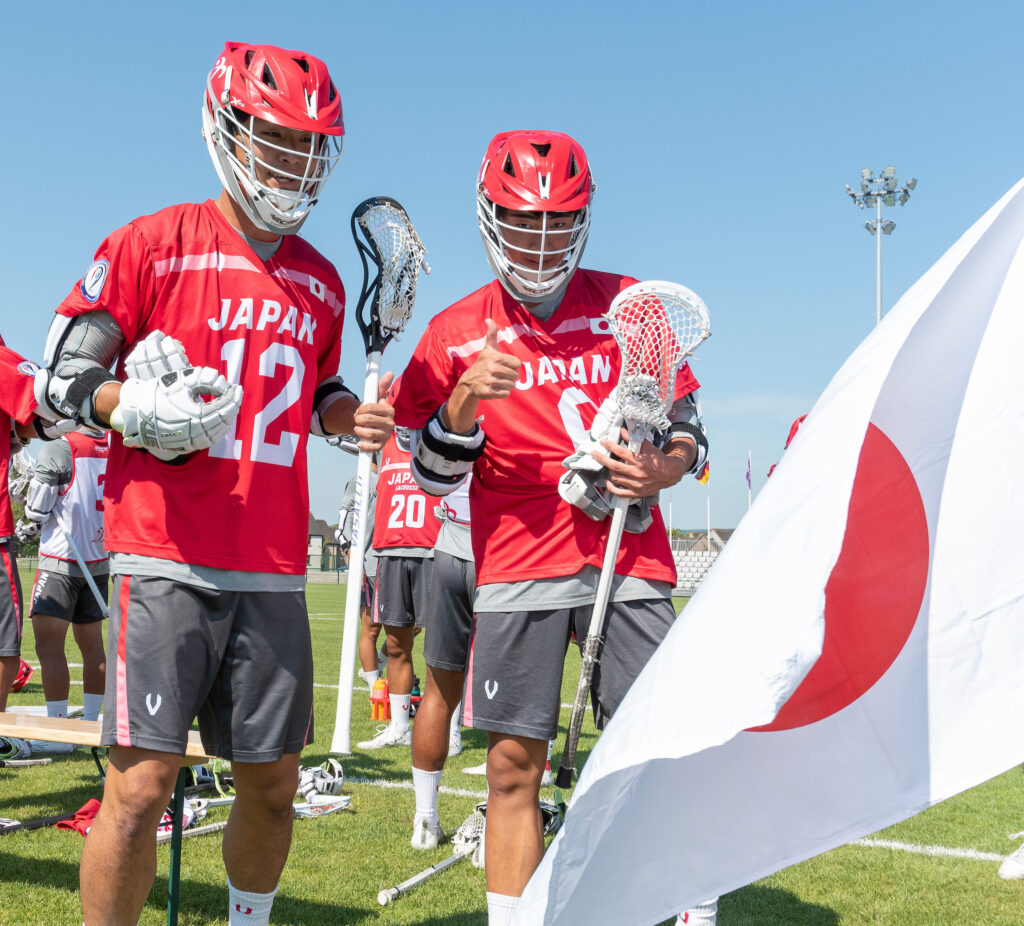
He was then tabbed for the senior men’s team job and had to bring his ideas to a new group of players, which took time in an intense training run-up to the championship in San Diego.
Some scrimmages against Australia and England were eye-opening, but Suzuki said they gave his team confidence to compete and aim for the semifinals.
Japan ultimately lost to the Haudenosaunee, the third seed, a round early, but rebounded to finish fifth with a placement game win over England.
The team did so showcasing its trademark Japanese style in pool play to blaze through the competition with a relentless pace, scoring 70 goals while conceding just six.
But Suzuki’s adjustments showed up in the back half of the tournament as the team was able to defeat Germany and England in more methodical fashion.
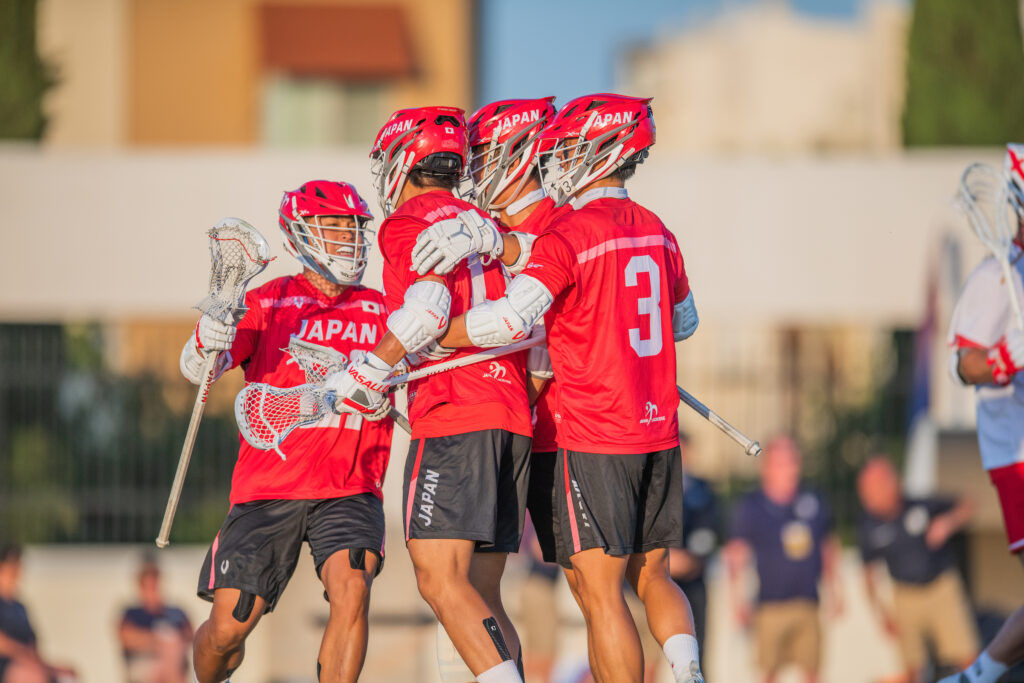
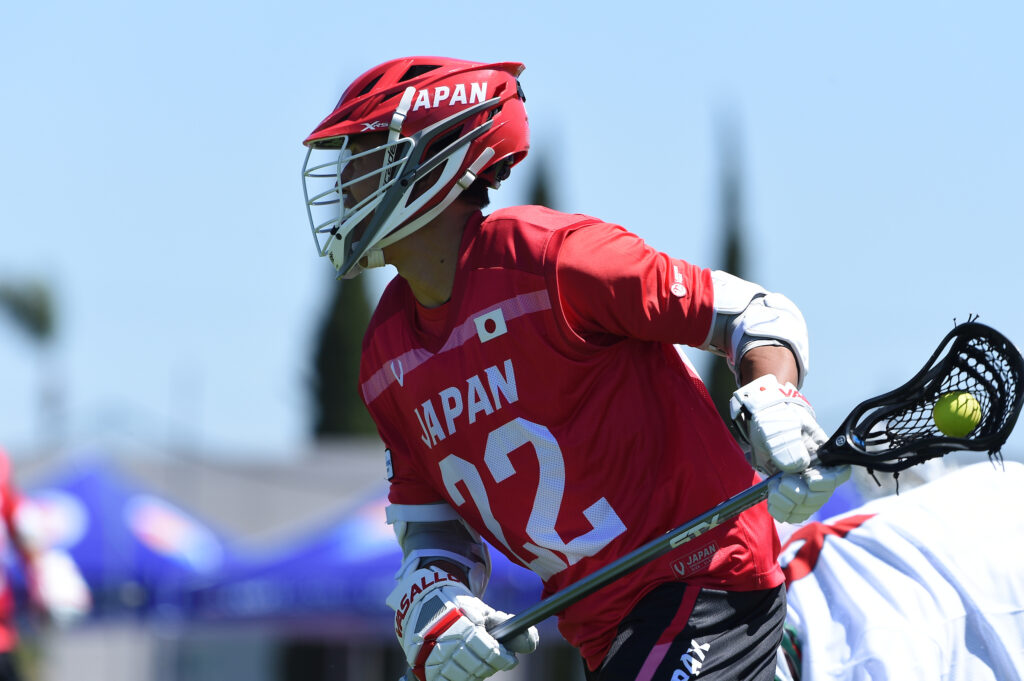

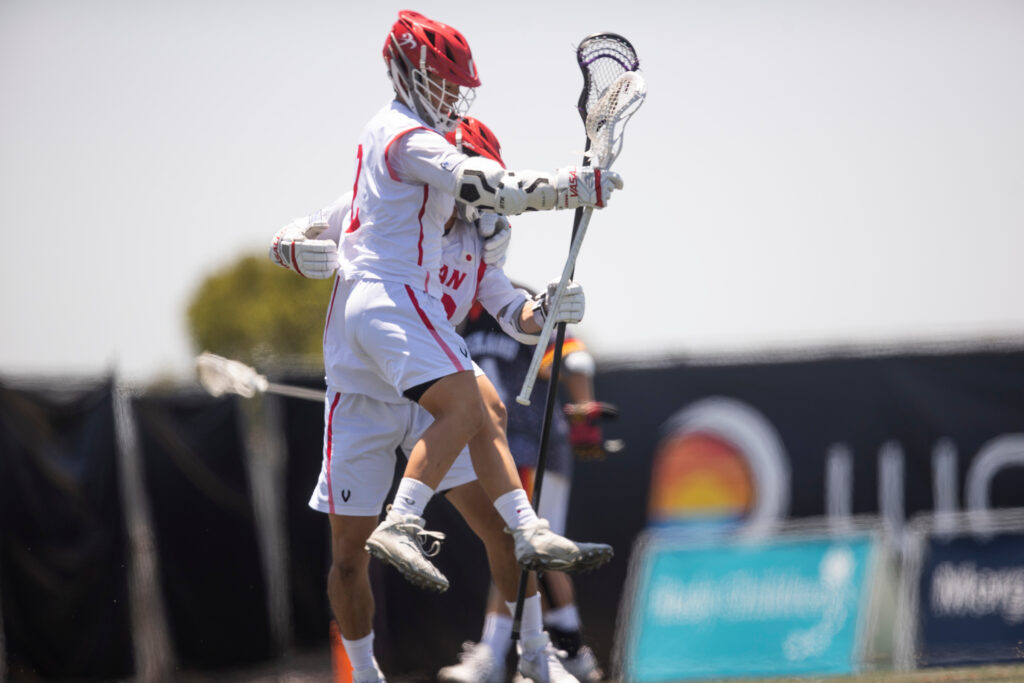
“I enjoyed finding our own ways to develop our game and tried to be as creative as possible in our training methods,” said Suzuki. “This was our way of Japanifying lacrosse, as we tried to make it work at the highest level. I knew we had enough ingredients to win – I think we passed the test, but I feel responsible to have an even better experience the next time around.”
The future of Japan Lacrosse rests in the hands of capable leaders and coaches who are uniquely straddling the challenge to keep up with the rapid innovation in the game while staying true to the roots that have brought the organization this far.
“It can be difficult to change a way of thinking, but it is very important to accept new thoughts and help the younger generation meet the new challenges,” said Okubo. “It is still a special experience to be part of these world championships, and lacrosse is changing life itself for people in Japan. Keeping the basic principles of what brought Japanese lacrosse so much recognition will have a positive influence on all.”
Everyone in JLA agrees on the future: more players participating in the game at a younger age and getting as many experiences as possible to play the sport at all levels. Youth players need more opportunities, and top-level players need more competition against the best in the world as they broaden the horizon from a university-focused mindset to a focus on a true international career.
The aim is to push for medals and semifinal appearances, as being fifth in the world is “normal” now, according to Sato.
The next senior world championships in field lacrosse are in 2026 and 2027. Then the Olympics in 2028 in Los Angeles loom on the horizon, and lacrosse as a sport has positioned itself as strongly as possible to be part of the Games.
The runway is paved for Japanese lacrosse, which has already exploded onto the global scene in recent years, to ascend into a new stratosphere as a global epicenter of the sport.
“We can utilize our imaginations to the limit and there are infinite possibilities on what we can do throughout lacrosse,” said Shibata.
Japan’s journey has been forged with adaptability and the power of lacrosse to change lives. What has been accomplished and the bright future ahead shows the power of Japan’s belief in doing things its own way.
